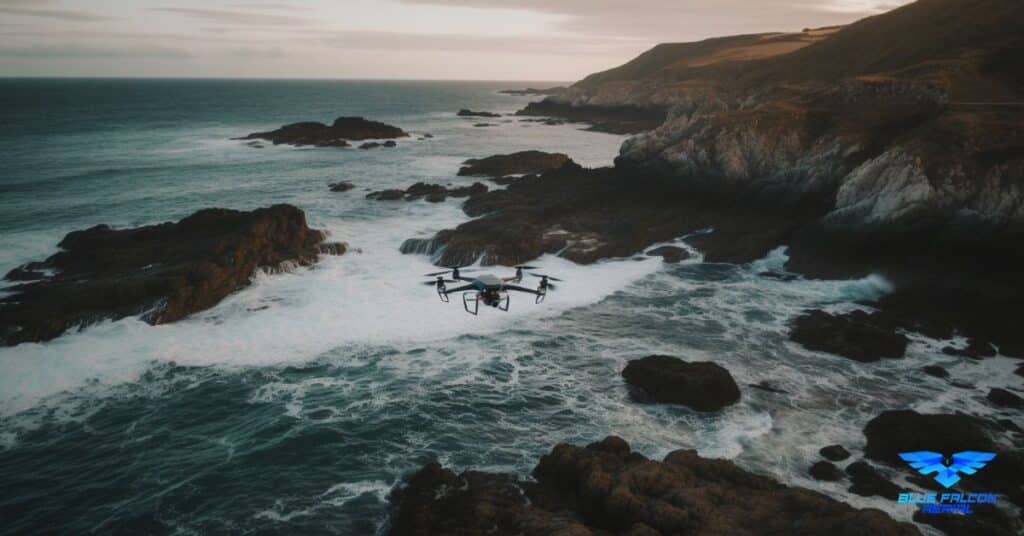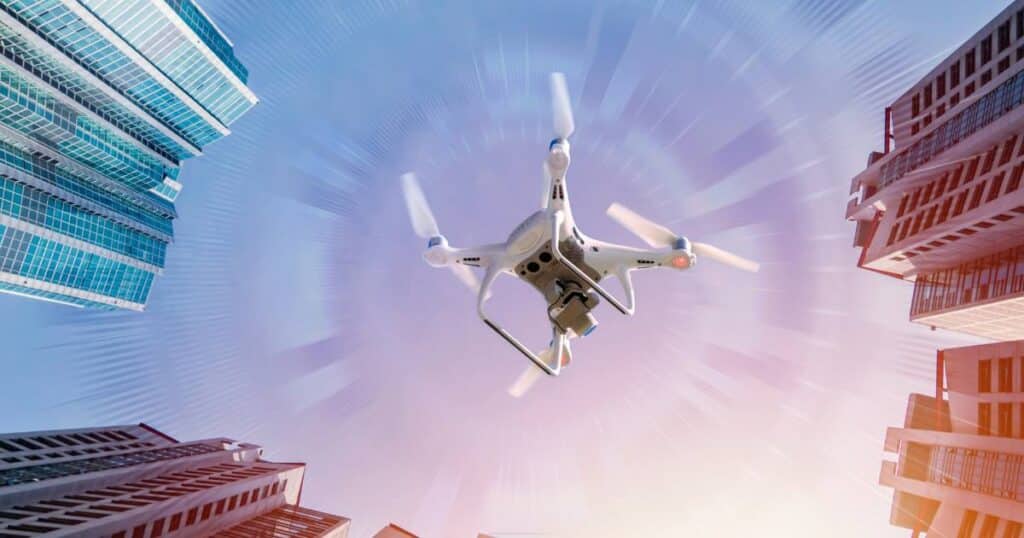Are you aware of how LiDAR is revolutionizing coastal zone and marine management? Coastal areas and oceans are complex ecosystems that require constant monitoring and management. Utilizing LiDAR in coastal zone management and marine applications has become a game changer in addressing environmental and socio-economic challenges faced by these areas. Dive into this article to explore the fascinating world of LiDAR technology and how it’s making a difference in managing our precious coastal zones and marine environments.
What is LiDAR?
LiDAR, which stands for Light Detection and Ranging, is a remote sensing technology that uses laser pulses to measure distances and create accurate, high-resolution maps of the Earth’s surface. The technology works by emitting laser beams from a LiDAR sensor, which can be mounted on various platforms such as aircraft, drones, or satellites. The beams then bounce back from the target surface, and the sensor measures the time it takes for the beams to return. This information, combined with the sensor’s position and orientation, is used to calculate the distance to the target and generate a detailed 3D representation of the area being surveyed.
How LiDAR Works
A LiDAR system typically consists of four main components: a laser source, a scanner, a photodetector, and a GPS and Inertial Measurement Unit (IMU). The laser source emits light pulses at specific wavelengths, which are then directed towards the target area by the scanner. The photodetector captures the reflected light, while the GPS and IMU record the position and orientation of the sensor during data collection.
To process the collected data, specialized software is used to convert the raw measurements into a point cloud, which is a set of data points in a 3D coordinate system. Each point in the point cloud represents a specific location on the Earth’s surface, with attributes such as elevation, intensity, and color. These point clouds can then be used to create various types of maps, models, and visualizations, depending on the intended application.
Importance of Coastal Zone Management
Coastal zone management is the process of maintaining and protecting coastal ecosystems, resources, and infrastructure. It is a critical aspect of sustainable development, as it balances the competing demands of environmental conservation, socio-economic development, and hazard mitigation.
Environmental Concerns
Coastal zones are home to diverse and fragile ecosystems, including beaches, dunes, wetlands, estuaries, and coral reefs. These ecosystems provide essential services such as coastal protection, water purification, and carbon sequestration. They also support a wide range of species, many of which are endemic or endangered. However, these ecosystems are under constant threat from human activities such as urbanization, pollution, and climate change. Coastal zone management aims to preserve and restore these ecosystems by implementing effective conservation and restoration strategies.
Socio-economic Factors
Coastal areas are also essential for human well-being and economic development. They support various industries such as tourism, fishing, and shipping, which contribute significantly to local and national economies. Moreover, coastal areas often have high population densities, as people are drawn to the numerous opportunities and amenities available in these regions. As a result, there is an increasing demand for infrastructure and land resources, leading to conflicting interests among various stakeholders. Coastal zone management seeks to balance these competing demands by promoting sustainable development practices, minimizing negative environmental impacts, and ensuring equitable access to resources and opportunities for all.
Can You Use LiDAR in the Ocean?
Yes, LiDAR can be used in the ocean, but its effectiveness depends on the type of LiDAR system being used and the specific application. LiDAR is primarily used for mapping and monitoring coastal zones and shallow waters. For deeper waters, other remote sensing technologies such as sonar or satellite imagery are often more suitable.
How LiDAR Works in the Ocean
LiDAR systems used in oceanic applications are typically either airborne or bathymetric LiDAR. Airborne LiDAR is mounted on aircraft or drones and is particularly useful for mapping coastal zones, shorelines, and shallow waters. Bathymetric LiDAR, on the other hand, is specifically designed to penetrate water and map underwater topography, such as the seafloor.
The key difference between these two types of LiDAR is the wavelength of the laser pulses. Airborne LiDAR typically uses a near-infrared laser, which cannot penetrate water effectively. In contrast, bathymetric LiDAR employs a green laser, which can penetrate water to a certain depth, usually up to 50 meters depending on water clarity.
What Happens When LiDAR Hits Water?
When LiDAR laser pulses hit water, some of the light is absorbed and scattered by the water molecules, while the remaining light continues to travel through the water. The ability of LiDAR to penetrate water depends on the wavelength of the laser pulses and the water’s optical properties, such as turbidity and the presence of suspended particles. In general, shorter wavelengths, such as green light, are more effective at penetrating water than longer wavelengths, such as near-infrared light.
What Can LiDAR Not Penetrate?
While LiDAR is an effective tool for mapping and monitoring coastal zones and shallow waters, there are certain limitations to its penetration capabilities. LiDAR cannot effectively penetrate:
- Deep water: LiDAR’s penetration depth is limited, typically up to 50 meters for bathymetric LiDAR, depending on water clarity. For deeper waters, sonar technology is more appropriate.
- Highly turbid water: The presence of suspended particles or high levels of organic matter can significantly reduce LiDAR’s ability to penetrate water.
- Dense vegetation: LiDAR may struggle to penetrate dense underwater vegetation or dense canopies, which can obscure the underlying surface.
Applications of LiDAR in Coastal Zone Management
LiDAR technology offers numerous applications in coastal zone management, helping to address environmental and socio-economic challenges in these areas.
Shoreline Mapping and What LiDAR Data Tells Us About Shorelines
LiDAR is an invaluable tool for shoreline mapping, providing highly accurate and detailed elevation data of coastal areas. This information enables scientists and coastal managers to analyze shoreline changes, such as erosion or accretion, and predict future shoreline positions. LiDAR data can also be used to identify and classify different coastal landforms, such as beaches, dunes, and cliffs, which is essential for coastal zone management and planning.
Erosion Monitoring
Coastal erosion is a significant concern for many communities, as it can lead to loss of land, property, and infrastructure. LiDAR can be used to monitor erosion rates and assess the effectiveness of erosion control measures, such as beach nourishment or the construction of seawalls. By comparing LiDAR data collected at different times, coastal managers can identify areas at risk and implement appropriate management strategies.
Flood Risk Assessment
LiDAR’s ability to produce high-resolution elevation data makes it an essential tool for flood risk assessment in coastal zones. Using LiDAR data, scientists can create detailed digital elevation models (DEMs) that can be used to simulate potential flood scenarios and identify areas at risk. This information helps coastal managers and planners to develop appropriate flood mitigation measures, such as the construction of levees or the implementation of land use regulations.
Habitat Mapping
Coastal zones are home to diverse and fragile ecosystems that require protection and management. LiDAR data can be used to map and monitor critical habitats, such as wetlands, mangroves, and coral reefs. This information helps scientists and conservationists to assess the health of these ecosystems, identify areas of ecological importance, and develop conservation strategies.
Infrastructure Planning
Effective coastal zone management requires the careful planning of infrastructure development, such as roads, buildings, and coastal protection structures. LiDAR data provides valuable information on topography, land use, and potential hazards, which can be used to inform the design and placement of infrastructure. This ensures that development is sustainable and minimizes its impact on the environment and local communities.
Applications of LiDAR in Marine
LiDAR is not only useful for coastal zone management but also has several applications in marine environments.
Seafloor Mapping
Bathymetric LiDAR can be used to map the seafloor in shallow waters, providing detailed information on underwater topography, such as the presence of reefs, sandbars, and other features. This information is valuable for navigation, resource management, and the identification of potential hazards.
Coral Reef Studies
Coral reefs are some of the most diverse and valuable ecosystems on Earth. LiDAR can be used to map and monitor the health of coral reefs, providing information on their size, structure, and the distribution of different coral species. This information can help scientists and conservationists develop targeted strategies for coral reef conservation and restoration.
Fishery Management
LiDAR can be used to identify and map underwater habitats that are important for fish and other marine species, such as seagrass beds or rocky reefs. This information can be used to inform fishery management strategies, such as the establishment of marine protected areas or the implementation of sustainable fishing practices.
Shipwreck Detection
LiDAR can be used to detect and map shipwrecks in shallow waters, providing valuable information for archeologists, historians, and conservationists. Shipwrecks can also serve as important habitats for marine life and may be of interest for recreational diving or tourism.
Submerged Aquatic Vegetation Mapping
Submerged aquatic vegetation (SAV), such as seagrass beds, provides essential habitat for many marine species and plays a crucial role in water quality and sediment stabilization. LiDAR can be used to map and monitor the distribution and health of SAV, informing conservation and management efforts.
Benefits of Using LiDAR for Coastal and Marine Management
The use of LiDAR in coastal and marine management offers several significant benefits, which contribute to its growing popularity among researchers and practitioners.
Accuracy and Precision
LiDAR technology is known for its high accuracy and precision, providing detailed and reliable data on elevation, topography, and underwater features. This level of detail allows coastal and marine managers to make informed decisions based on accurate information, leading to more effective management strategies and outcomes.
Cost-effectiveness
Although the initial investment in LiDAR technology can be high, the cost per unit area surveyed is relatively low compared to traditional survey methods, such as ground-based surveys or photogrammetry. Additionally, LiDAR data can be collected quickly and efficiently, reducing the overall cost of data acquisition and processing.
Time Efficiency
LiDAR surveys can cover large areas in a relatively short amount of time, making it an efficient method for collecting data in coastal and marine environments. This rapid data collection is particularly beneficial in dynamic coastal zones, where conditions can change quickly, and timely information is critical for effective management.
Comprehensive Data Collection
LiDAR technology can capture a wealth of information in a single survey, providing comprehensive datasets that can be used for various applications in coastal and marine management. This includes elevation data, vegetation classification, and underwater topography, among others. This multifaceted data collection allows coastal and marine managers to gain a more complete understanding of the environments they are managing, facilitating better decision-making and planning.
Real-world Examples of LiDAR in Coastal and Marine Management
LiDAR technology has been successfully applied in numerous coastal and marine management projects around the world. Here are a few examples of how LiDAR has made a difference in these areas:
Case Study 1: Coastal Erosion Monitoring in Louisiana, USA
In response to ongoing coastal erosion and land loss in Louisiana, USA, LiDAR has been used to create high-resolution elevation models of the state’s coastal areas. These models have allowed scientists and managers to identify areas at risk, monitor the effectiveness of restoration projects, and plan for future coastal protection efforts.
Case Study 2: Seafloor Mapping for Marine Protected Areas in the Mediterranean
Bathymetric LiDAR has been used to map the seafloor in shallow waters of the Mediterranean Sea, providing critical information for the establishment and management of marine protected areas. This information has helped to identify important habitats, such as seagrass meadows and rocky reefs, and inform the design and placement of marine protection zones.
Case Study 3: Coral Reef Mapping in the Great Barrier Reef, Australia
Researchers have used LiDAR to map the extent and structure of coral reefs in the Great Barrier Reef, Australia. This information has been used to assess the health of the reef and develop targeted conservation strategies. The high-resolution data provided by LiDAR has also allowed scientists to study the impacts of climate change on coral reef ecosystems, informing global efforts to protect these valuable habitats.
In conclusion, the use of LiDAR in coastal zone management is a groundbreaking approach that offers incredible benefits and applications. From shoreline mapping to flood risk assessment, LiDAR technology has proven to be an indispensable tool for effective coastal zone management. To learn more about LiDAR and its various applications, we encourage you to visit Aerial LiDAR 101: An Introduction to its Applications and Benefits. If you are in need of drone services for your coastal zone management projects, don’t hesitate to contact Blue Falcon Aerial for professional assistance.




